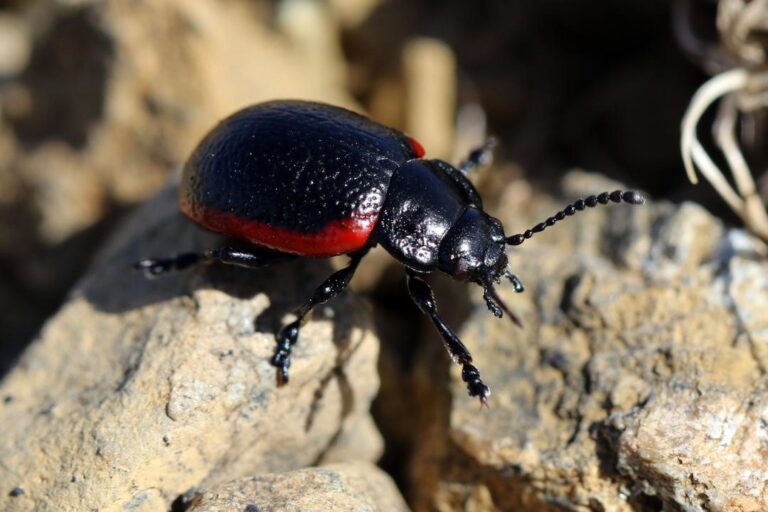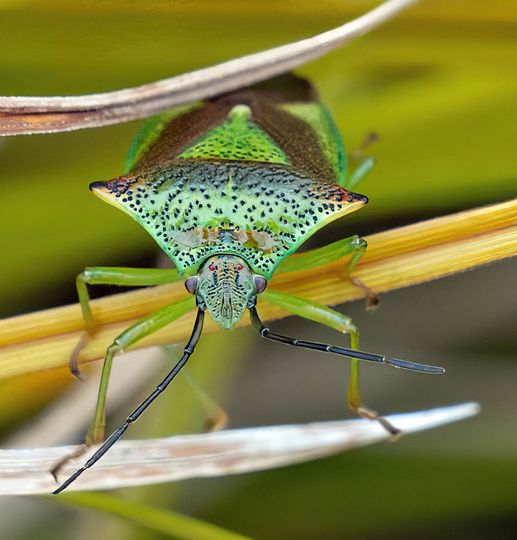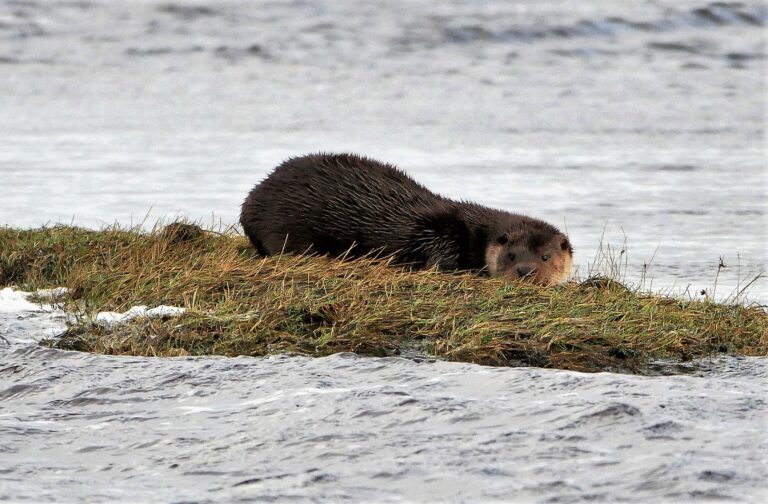Oxytropis halleri
Gaelic: Cleiteag-gheur chorcra
By Sarah Bird, Species on the Edge Project Officer, North Scotland Coast

Purple oxytropis is one of Scotland’s rarest plants, and it doesn’t grow anywhere else in the UK. The very best place to see it is on the north Sutherland coast between Bettyhill and Melvich. It is a Species on the Edge Priority Species.
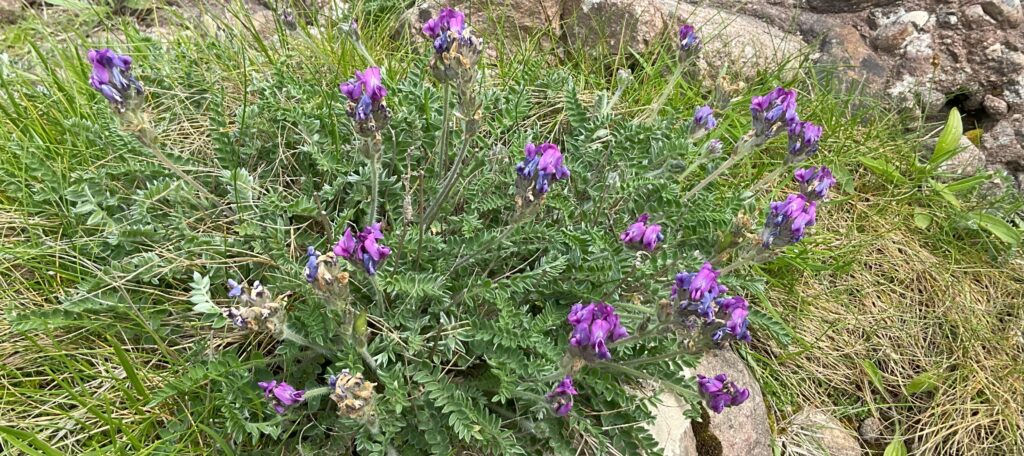
Purple Oxytropis does also grow on the tops of a couple of Scottish mountains in Perthshire and Argyll. In Europe its home is in the high mountains too, so our coastal plants are particularly unusual. As part of my job for Species on the Edge i have to visit all the north coast sites where this beautiful plant grows, to check how it’s doing.
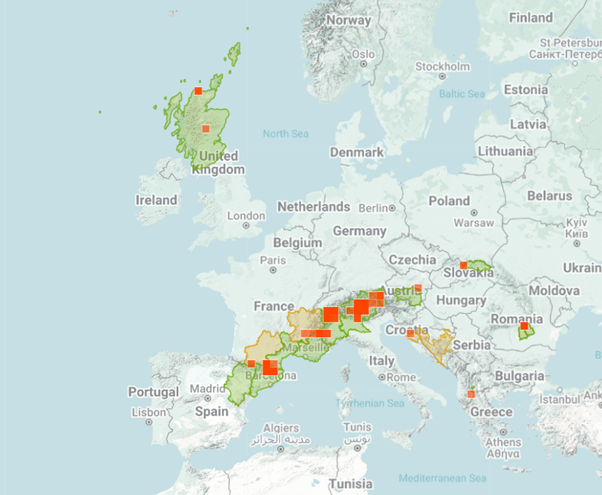
(accessed at iNaturalist. www.inaturalist.org/taxa/133261-Oxytropis-halleri)
What to look for
Purple Oxytropis is a perennial plant with grey-green silky-hairy leaves. The leaves are pinnate with 9-15 pairs of leaflets and a single leaflet at the end. The bright pink or purple flowers grow in clusters like clover flowers, held on stems above the leaves. Flower colour becomes more blue as flowers fade. (Some flower books say that there are occasional plants with white flowers – I would love to know if anyone sees one of these.)
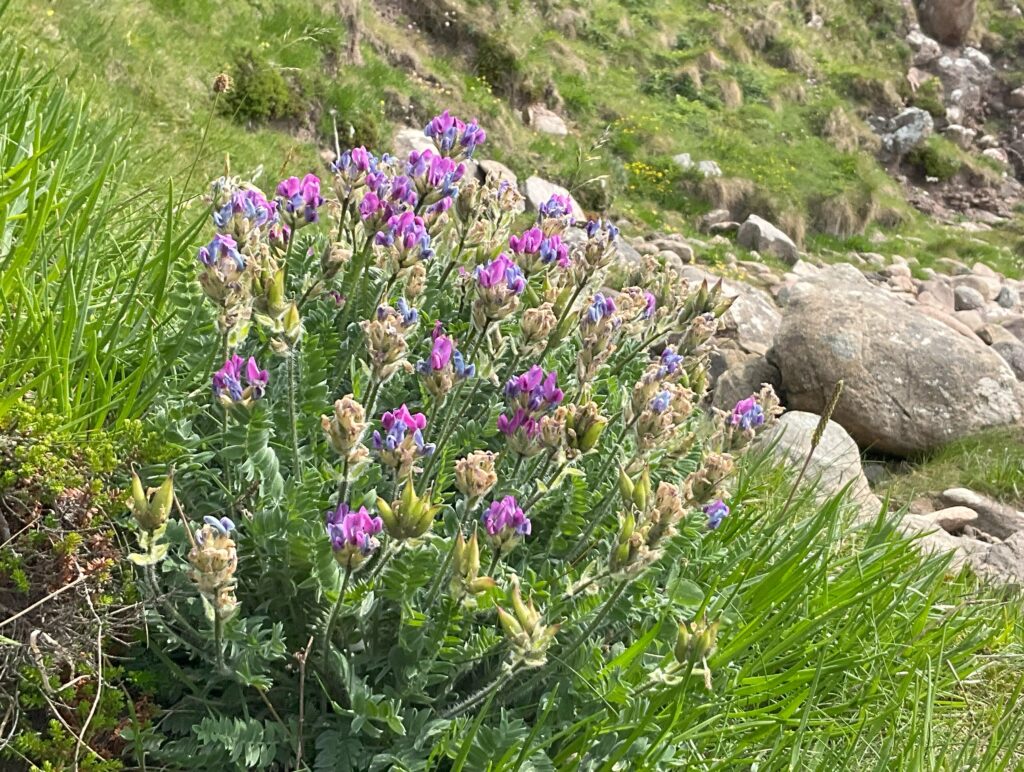
On cliffs and slopes where it is protected from grazing large colonies can develop, and the grey green foliage is visible from a distance, especially when flowers are present.
There are some places where Purple Oxytropis grows on dunes and coastal heath, at Invernaver and Strathy for example. At these sites the plants tend to be grazed, so they have a flatter form, with flowers around the edge. Heavily grazed plants are silvery in colour and rarely produce flowers.
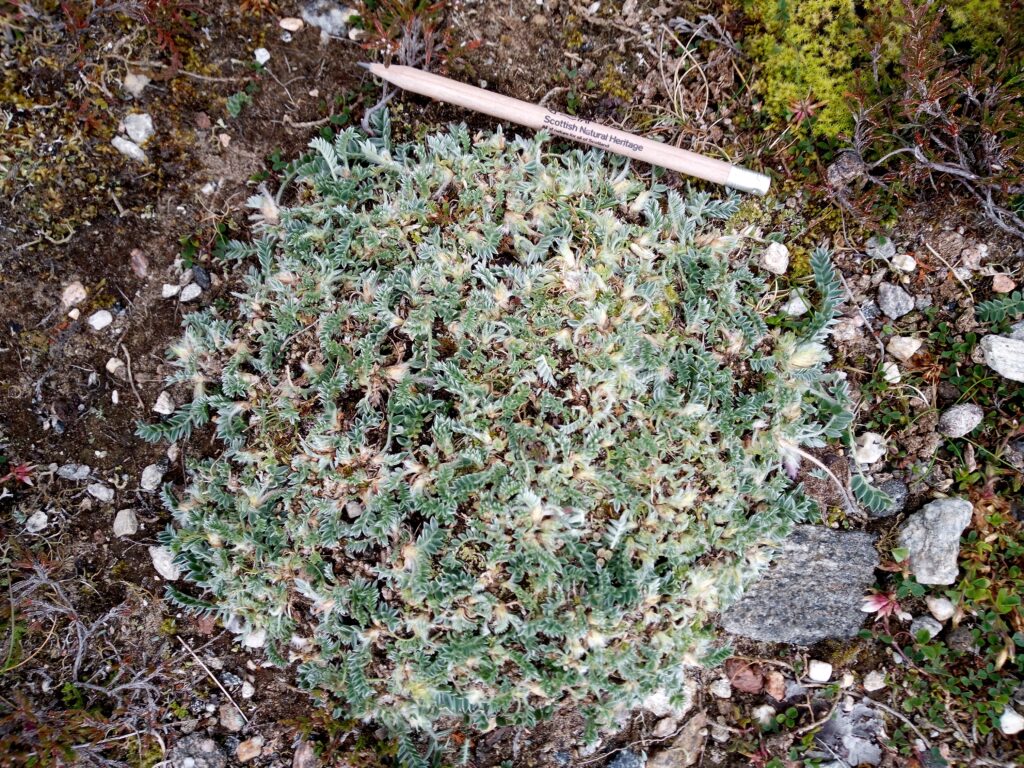
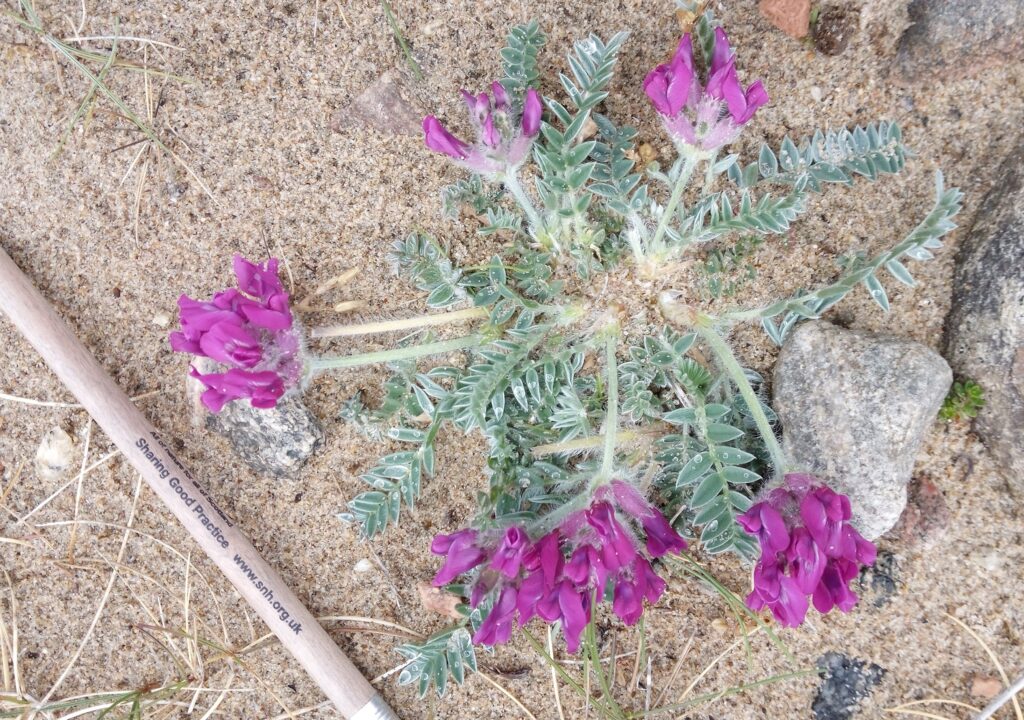
Plants have a flat form where they are grazed.
Similar Species
Purple Oxytropis can be confused with Purple Milk-vetch (Astragalus danicus), another rare plant in the pea family. Purple Milk-vetch is recorded near Durness, Clachtoll, and in the Dornoch area. However, there are a few key differences to look out for:
- Milk-vetch leaves are much brighter green than Oxytropis leaves.
- The Oxytropis flower stalk has no leaves on it, and grows from a dense tuft of leaves on the ground. The Milk-vetch flower is held on a longer stalk with leaves on the stalk.
- There is a point on the end of the lower keel petal in Oxytropis, that isn’t present in Milk-vetch. See photos below. This feature is the basis for the Gaelic name which means ‘sharp spurred purple flower’.
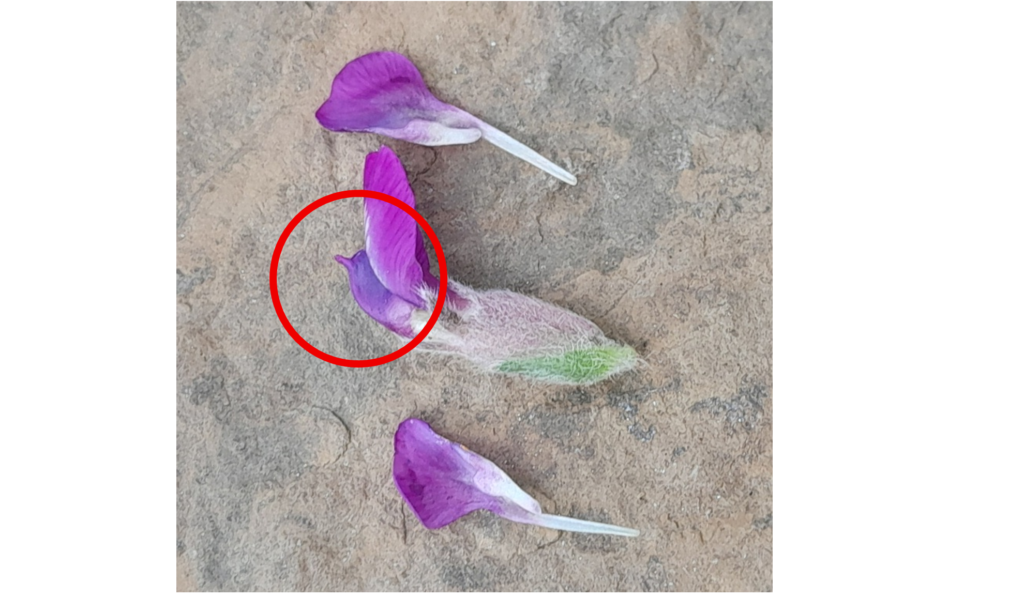
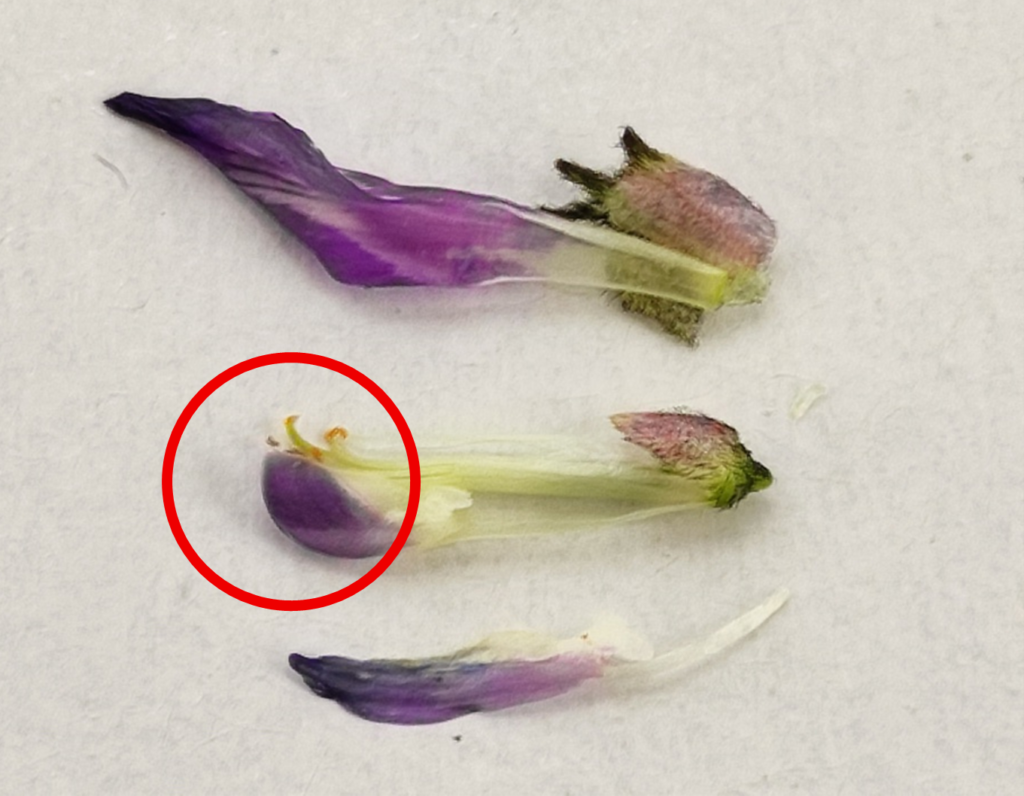
Where to look
Purple Oxytropis isn’t easy to find because it likes cliffs and rocks on steep, unstable slopes. A good strategy is to use binoculars to check vegetation on cliff edges beside beaches at Farr, Armadale and Strathy.
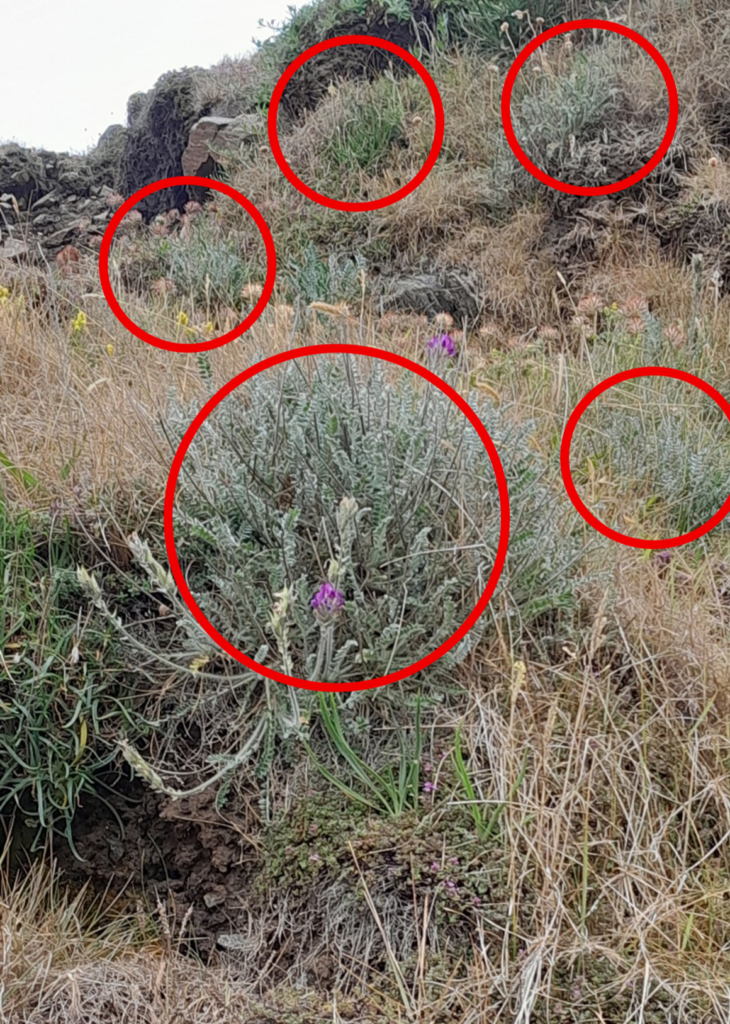
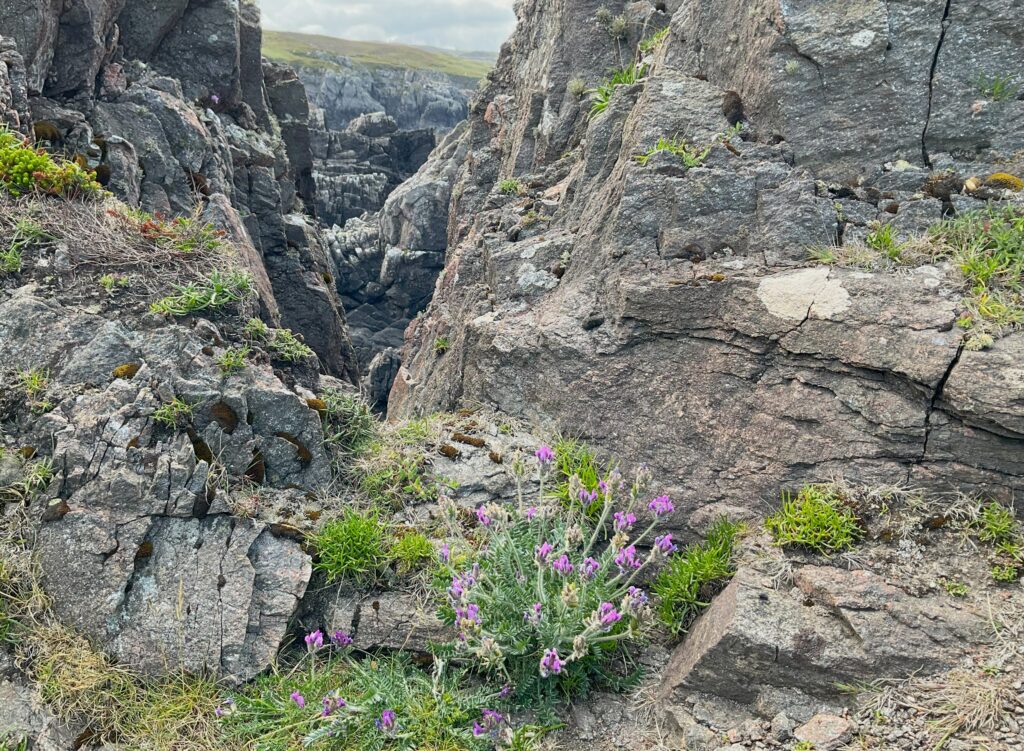
When to look
Purple Oxytropis flowers start to appear in May, and they are in full bloom in June. In most years there will still be some flowers in July, but many plants will be in seed by this point. Leaves are visible from May – November.
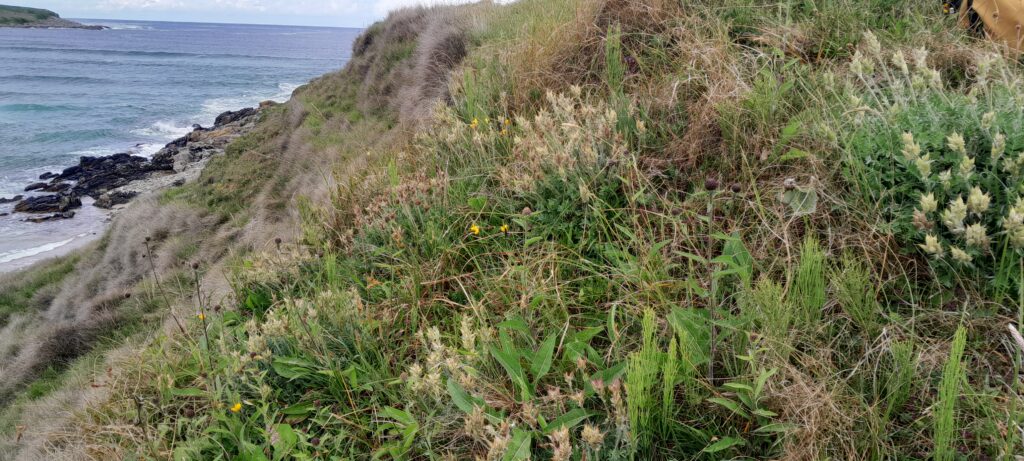
What you can do
What you can do..
If you find any Purple Oxytropis plants please record them. You can do this here, or by emailing me at sarah.bird@plantlife.org.uk All sightings are really useful for the Species on the Edge project.
Fascinating Facts
- There are few wild native plants which look good enough to grow in gardens but Purple Oxytropis is definitely one of them!
- It is a member of the legume family related to peas and beans, clover and gorse.
- It can survive in nutrient poor soils by capturing nitrogen from the air in nodules on its roots.
Beautiful Purple Oxytropis in its natural habitat. Can you spot the plants near the top of the cliff?
Threats
It’s likely that Purple Oxytropis has never been a common plant in Scotland, which is right on the north western edge of its range. However, it was almost certainly more abundant in the past than it is today. A variety of factors are affecting its distribution and abundance:
- On Scotland’s east coast some populations have been lost due to development destroying habitat.
- The species is vulnerable to over-grazing. Sheep and rabbits love to eat this plant.
- Purple Oxytropis needs open conditions. It doesn’t thrive in areas where heathland plants, trees or gorse take over. Some grazing or erosion is important for the its survival.
- Purple Oxytropis is dependent on pollinators, mainly bees, to successfully reproduce. Anything impacting on pollinators will in turn impact on the survival of this plant.
- The species isn’t widely distributed enough to withstand local disturbance. Some small populations (especially on mountain tops) could be wiped out by a single event such as a landslide. Interestingly, in my survey work in north Sutherland for Species on the Edge I have found that small coastal colonies are actually linked along significant stretches of inaccessible coastline, forming larger more resilient populations. Indeed, I think that small scale erosion is probably helping to provide bare ground for seed establishment rather than threatening population survival along the north Sutherland coast.




